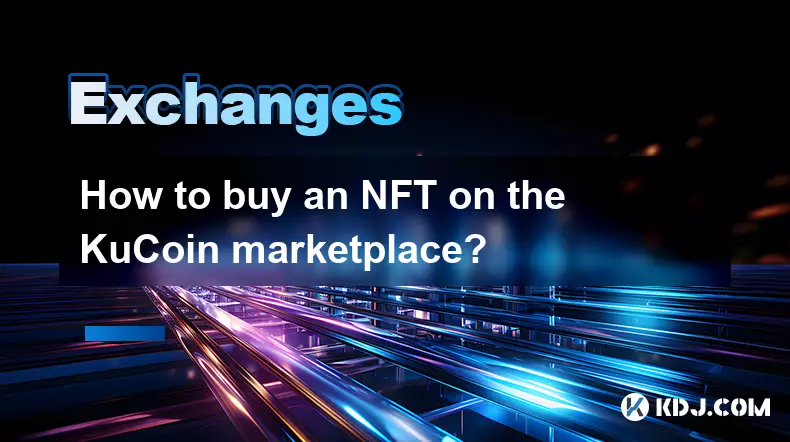-
 bitcoin
bitcoin $120167.907534 USD
1.27% -
 ethereum
ethereum $4468.611945 USD
2.53% -
 xrp
xrp $3.013607 USD
1.80% -
 tether
tether $1.000549 USD
-0.01% -
 bnb
bnb $1092.592149 USD
6.28% -
 solana
solana $231.391244 USD
4.59% -
 usd-coin
usd-coin $0.999699 USD
-0.04% -
 dogecoin
dogecoin $0.259020 USD
4.30% -
 tron
tron $0.342747 USD
0.34% -
 cardano
cardano $0.860977 USD
1.07% -
 hyperliquid
hyperliquid $50.155412 USD
5.34% -
 chainlink
chainlink $22.637678 USD
0.46% -
 ethena-usde
ethena-usde $1.000528 USD
-0.07% -
 avalanche
avalanche $30.613779 USD
-0.07% -
 stellar
stellar $0.403905 USD
0.94%
How are Crypto.com's staking rewards calculated?
Crypto.com staking rewards depend on locked CRO amount, duration, and tier level, with monthly payouts, pro-rata calculations, and risks tied to volatility and early unstaking.
Sep 25, 2025 at 10:18 pm

Understanding the Basics of Crypto.com Staking
1. Crypto.com staking rewards are determined based on the number of CRO tokens a user locks in their account. The platform operates a tiered system where higher locked amounts grant access to elevated reward tiers. Each tier corresponds to different annual percentage yields, which fluctuate depending on market conditions and platform incentives.
2. Users must maintain their CRO holdings for specific lock-up periods, typically ranging from one month to 36 months. Longer lock-up durations generally yield higher returns. The exact APY varies across these durations, encouraging long-term commitment from stakeholders.
3. Rewards are distributed monthly and credited directly to the user’s Crypto.com wallet. These distributions occur regardless of whether the user actively trades or uses other features on the platform, as long as the staked amount remains within the required thresholds.
4. The calculation also factors in the total supply of staked CRO across the network. As more users participate, the overall pool grows, potentially diluting individual returns unless offset by increased incentive budgets from the platform.
5. Eligibility for staking is tied to account verification levels and adherence to regional regulatory guidelines. Only fully verified accounts can access higher staking tiers, ensuring compliance with anti-money laundering protocols.
Factors Influencing Reward Distribution
1. The primary driver behind staking rewards is the fixed percentage allocated by Crypto.com from its treasury reserves. This allocation is not derived from transaction fees or network validation but rather from pre-committed marketing and ecosystem development funds.
2. Market demand for CRO plays an indirect role. Increased token utility—such as spending via the Crypto.com Visa card or participating in decentralized finance integrations—can bolster confidence and support sustained reward programs.
3. Inflationary mechanisms within the CRO economy are carefully managed. While new tokens may be issued to fund rewards, the platform often counterbalances this through periodic buybacks and burns, maintaining scarcity and value stability.
4. Seasonal promotions and referral bonuses can temporarily boost effective yields. These limited-time offers are designed to attract new users and increase platform engagement without altering the base staking formula.
5. Network-wide participation rates influence perceived scarcity. When large portions of the circulating supply are staked, it reduces available liquidity, which can positively impact price dynamics and indirectly benefit all holders.
Transparency and Calculation Methodology
1. Crypto.com publishes historical APY data and provides estimators within the app to help users project potential earnings. These tools factor in current rates, lock-up length, and tier qualifications to deliver personalized forecasts.
2. Rewards are calculated pro-rata based on daily average balances during each reward cycle. If a user adjusts their staked amount mid-cycle, the payout reflects the weighted time their funds were committed at each level.
p>3. No compounding occurs automatically; users must re-stake earned CRO to grow their position. However, the platform occasionally runs campaigns that offer enhanced rates for compounded stakes.
4. Audits conducted by third-party firms verify the accuracy of reward distributions. Publicly released reports confirm that payouts align with stated terms and that no unauthorized minting or diversion of funds takes place.
5. Changes to staking parameters are announced in advance, giving users time to adjust strategies. Sudden reductions in APY are rare and typically coincide with broader shifts in corporate strategy or macroeconomic pressures affecting crypto markets.
Frequently Asked Questions
How often are staking rewards paid out on Crypto.com?Staking rewards are distributed once per month, typically around the same date each cycle. The exact timing depends on when the user initiated their stake and completed verification.
Can I unstake my CRO before the lock-up period ends?Early unstaking is permitted but results in forfeiture of accrued rewards and possible demotion to a lower tier. Some lock-up options allow partial early withdrawal under penalty, while others require full commitment until maturity.
Does staking CRO on Crypto.com involve any risks?The main risks include loss of access to funds during the lock-up period, exposure to CRO price volatility, and changes in reward rates due to policy updates. There is no risk of slashing since this is not a proof-of-stake blockchain validator model.
Are staking rewards subject to taxes?Yes, most jurisdictions treat staking rewards as taxable income upon receipt. Users should report these earnings according to local regulations and consult financial advisors for compliance guidance.
Disclaimer:info@kdj.com
The information provided is not trading advice. kdj.com does not assume any responsibility for any investments made based on the information provided in this article. Cryptocurrencies are highly volatile and it is highly recommended that you invest with caution after thorough research!
If you believe that the content used on this website infringes your copyright, please contact us immediately (info@kdj.com) and we will delete it promptly.
- BlockDAG, DOGE, HYPE Sponsorship: Crypto Trends Shaping 2025
- 2025-10-01 00:25:13
- Deutsche Börse and Circle: A StableCoin Adoption Powerhouse in Europe
- 2025-10-01 00:25:13
- BlockDAG's Presale Buzz: Is It the Crypto to Watch in October 2025?
- 2025-10-01 00:30:13
- Bitcoin, Crypto, and IQ: When Genius Meets Digital Gold?
- 2025-10-01 00:30:13
- Stablecoins, American Innovation, and Wallet Tokens: The Next Frontier
- 2025-10-01 00:35:12
- NBU, Coins, and Crypto in Ukraine: A New Yorker's Take
- 2025-10-01 00:45:14
Related knowledge

How to close my position in KuCoin Futures?
Oct 01,2025 at 07:54pm
Understanding Position Closure in KuCoin FuturesTrading futures on KuCoin requires a clear understanding of how to manage open positions. Closing a po...

How to find the contract address for a token on KuCoin?
Sep 30,2025 at 09:00pm
Finding the Contract Address on KuCoin1. Log into your KuCoin account through the official website or mobile application. Navigate to the 'Markets' se...

How to set up SMS verification on my KuCoin account?
Oct 03,2025 at 12:36am
How to Enable SMS Verification on Your KuCoin AccountSecuring your cryptocurrency exchange account is essential, especially on platforms like KuCoin w...

How to update the KuCoin app to the latest version?
Oct 03,2025 at 02:18am
How to Update the KuCoin App: A Step-by-Step GuideKeeping your KuCoin app updated ensures access to the latest security features, trading tools, and u...

How to buy an NFT on the KuCoin marketplace?
Oct 02,2025 at 10:19pm
Accessing the KuCoin NFT Marketplace1. Log in to your KuCoin account through the official website or mobile application. Ensure that two-factor authen...

How to buy KCS (KuCoin Token)?
Oct 01,2025 at 11:00am
Understanding KCS and Its Role in the KuCoin Ecosystem1. KCS, or KuCoin Token, is the native utility token of the KuCoin exchange, a prominent cryptoc...

How to close my position in KuCoin Futures?
Oct 01,2025 at 07:54pm
Understanding Position Closure in KuCoin FuturesTrading futures on KuCoin requires a clear understanding of how to manage open positions. Closing a po...

How to find the contract address for a token on KuCoin?
Sep 30,2025 at 09:00pm
Finding the Contract Address on KuCoin1. Log into your KuCoin account through the official website or mobile application. Navigate to the 'Markets' se...

How to set up SMS verification on my KuCoin account?
Oct 03,2025 at 12:36am
How to Enable SMS Verification on Your KuCoin AccountSecuring your cryptocurrency exchange account is essential, especially on platforms like KuCoin w...

How to update the KuCoin app to the latest version?
Oct 03,2025 at 02:18am
How to Update the KuCoin App: A Step-by-Step GuideKeeping your KuCoin app updated ensures access to the latest security features, trading tools, and u...

How to buy an NFT on the KuCoin marketplace?
Oct 02,2025 at 10:19pm
Accessing the KuCoin NFT Marketplace1. Log in to your KuCoin account through the official website or mobile application. Ensure that two-factor authen...

How to buy KCS (KuCoin Token)?
Oct 01,2025 at 11:00am
Understanding KCS and Its Role in the KuCoin Ecosystem1. KCS, or KuCoin Token, is the native utility token of the KuCoin exchange, a prominent cryptoc...
See all articles










































































